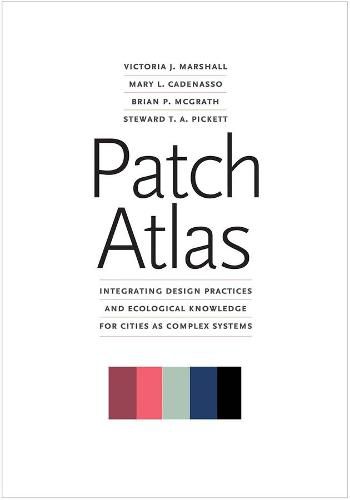Readings Newsletter
Become a Readings Member to make your shopping experience even easier.
Sign in or sign up for free!
You’re not far away from qualifying for FREE standard shipping within Australia
You’ve qualified for FREE standard shipping within Australia
The cart is loading…






A new tool for analyzing urban land cover that integrates design practices and ecological knowledge for understanding cities as complex, patchy and dynamic systems
This atlas is a unique conceptual tool to describe and analyze cities as complex systems, using a new, hybrid approach to urban land cover classification. As an impetus to bring ecologists and urban designers together, it builds on over a decade of shared knowledge from the Baltimore Ecosystem Study to inspire ecologically motivated design practice.
Rather than separating human-constructed environments from predominantly biological and geological ones, this book integrates built and ecological structures and shows how this integration can contribute to the scholarship of ecology and the practice of design. The atlas displays maps and tables depicting these hybrid land cover classes and the relationships between them; information on how the specific patch arrangements evolved over time; and speculations on how cover might change through design, disturbance, or succession. Interdisciplinary and strikingly illustrated, the atlas is a new way to study, measure, and view cities with a more effective interaction of scientific understanding and design practice.
$9.00 standard shipping within Australia
FREE standard shipping within Australia for orders over $100.00
Express & International shipping calculated at checkout
Stock availability can be subject to change without notice. We recommend calling the shop or contacting our online team to check availability of low stock items. Please see our Shopping Online page for more details.
A new tool for analyzing urban land cover that integrates design practices and ecological knowledge for understanding cities as complex, patchy and dynamic systems
This atlas is a unique conceptual tool to describe and analyze cities as complex systems, using a new, hybrid approach to urban land cover classification. As an impetus to bring ecologists and urban designers together, it builds on over a decade of shared knowledge from the Baltimore Ecosystem Study to inspire ecologically motivated design practice.
Rather than separating human-constructed environments from predominantly biological and geological ones, this book integrates built and ecological structures and shows how this integration can contribute to the scholarship of ecology and the practice of design. The atlas displays maps and tables depicting these hybrid land cover classes and the relationships between them; information on how the specific patch arrangements evolved over time; and speculations on how cover might change through design, disturbance, or succession. Interdisciplinary and strikingly illustrated, the atlas is a new way to study, measure, and view cities with a more effective interaction of scientific understanding and design practice.